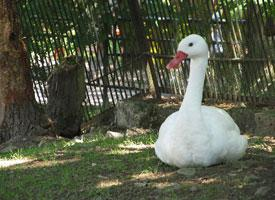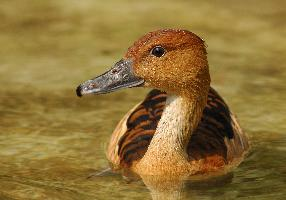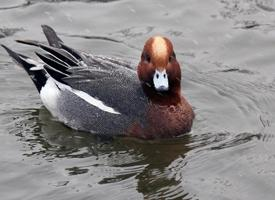
Súlyok és méretek
| Hossz | 38-tól 45-ig cm |
|---|---|
| Súly | 526-tól 675-ig g |
Állatleírás
The Harlequin duck, scientifically known as Histrionicus histrionicus, is a captivating and uniquely patterned species of waterfowl that belongs to the family Anatidae. This small, relatively compact duck is renowned for its striking plumage, which makes it one of the most easily identifiable ducks in its range. Harlequin ducks inhabit cold-water environments across the northern hemisphere, including the coastal regions of the North Atlantic and Pacific Oceans, as well as inland river systems.Adult males of the species exhibit a particularly dramatic appearance, characterized by a dark slate blue plumage that contrasts sharply with bold white markings and chestnut sides. Their faces are adorned with distinctive white patches and streaks, and they possess a small, round white ear patch. Bright chestnut flanks and a conspicuous white crescent in front of the eye further accentuate their dramatic coloring. The female Harlequin duck, in contrast, sports a more subdued color palette, featuring a mottled brown appearance that camouflages well with their breeding habitat. Both sexes have small, rounded heads and stout, compact bodies, with relatively short, pointed tails.
Harlequin ducks are most commonly found in rugged, remote coastal waters during the winter, where they feed on a diet primarily consisting of aquatic invertebrates such as crustaceans, mollusks, and insects. They exhibit remarkable agility, diving and swimming in turbulent, icy waters with ease. During the breeding season, which occurs in the late spring and summer, they migrate to fast-flowing, clear rivers and streams in mountainous or northern forested regions. Here, they nest on the ground, often in well-concealed locations near water.
The species is known for its fidelity to both breeding and wintering sites, often returning to the same locations year after year. Harlequin ducks form monogamous pairs, and while they are generally quiet, they can be quite vocal during the breeding season, with males producing a variety of calls to attract mates and communicate.
Harlequin ducks face several threats, including habitat destruction, oil spills, and fishing net entanglements, which have led to declines in some populations. However, they benefit from protected status in many parts of their range, and conservation efforts are in place to safeguard their habitats and ensure the species' long-term survival.
In summary, the Harlequin duck is a small, yet strikingly beautiful species of waterfowl, known for its distinctive plumage and remarkable adaptability to cold-water habitats. Its unique appearance, coupled with its fascinating behaviors, makes it a species of great interest to birdwatchers, conservationists, and nature enthusiasts alike.
Hasonló állatok
Új állatfotók
Top 10 állat
- Dolphin gull (Leucophaeus scoresbii)
- Japanese macaque (Macaca fuscata)
- Stone loach (Barbatula barbatula)
- Galápagos tortoise (Geochelone nigra complex)
- Russian tortoise (Testudo horsfieldii)
- Diana monkey (Cercopithecus diana)
- Greek tortoise (Testudo graeca)
- Common flying dragon (Draco volans)
- Moustached guenon (Cercopithecus cephus)
- Galápagos penguin (Spheniscus mendiculus)


